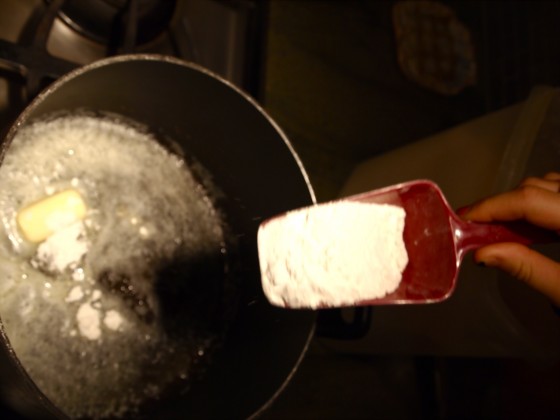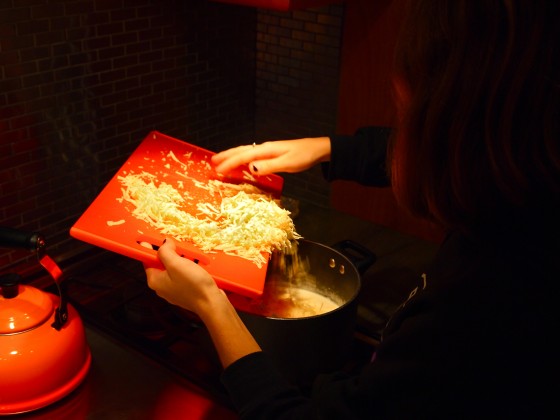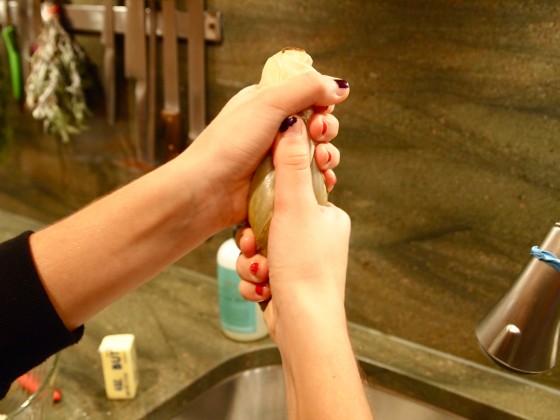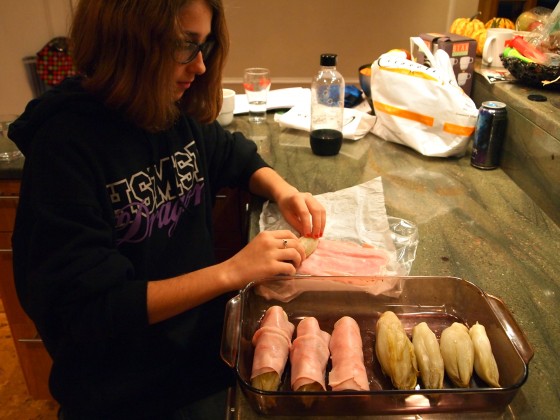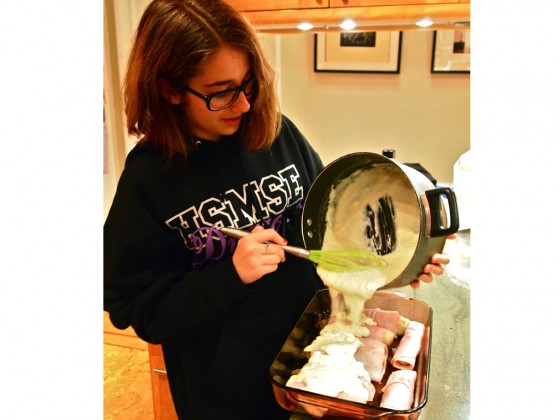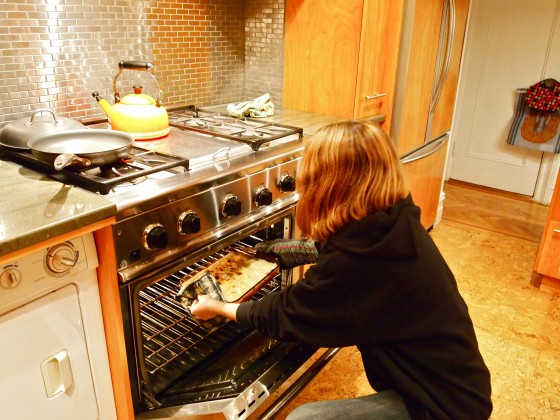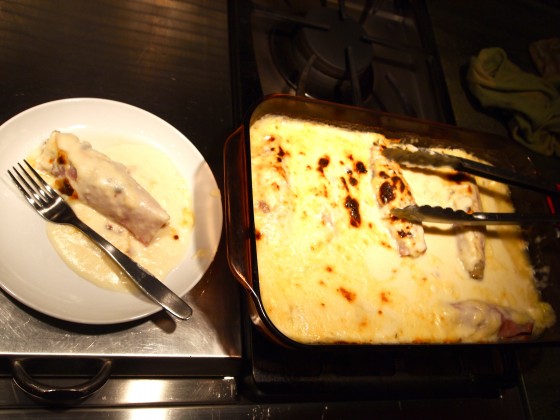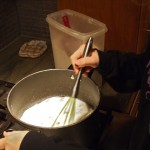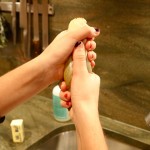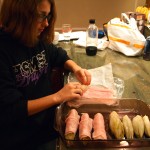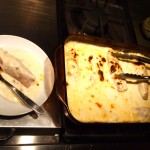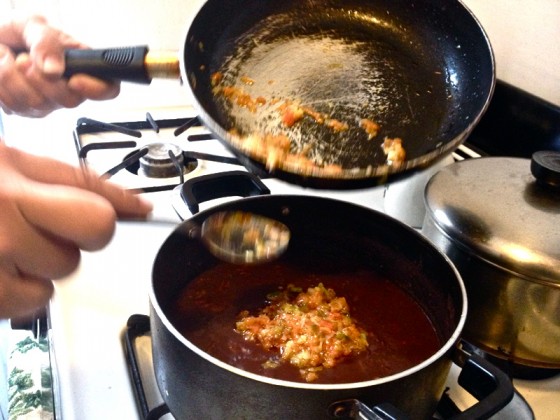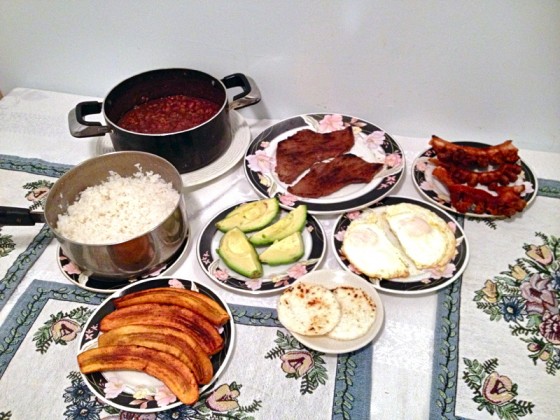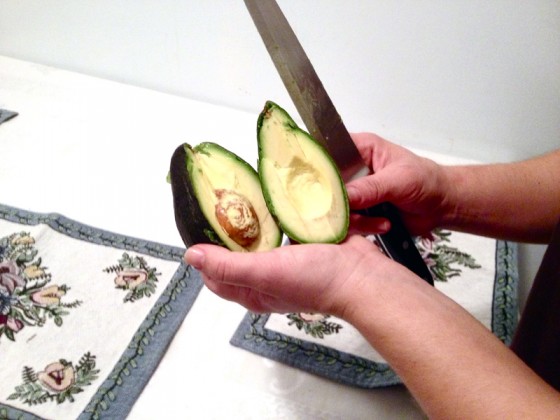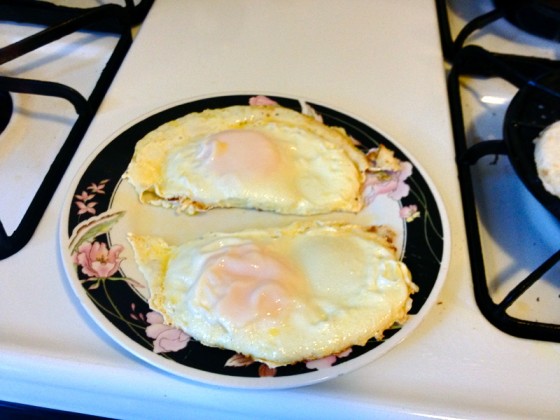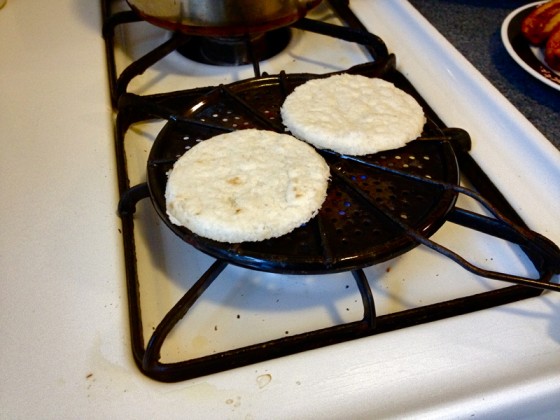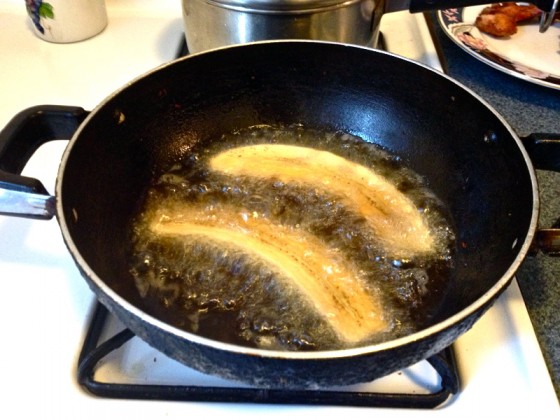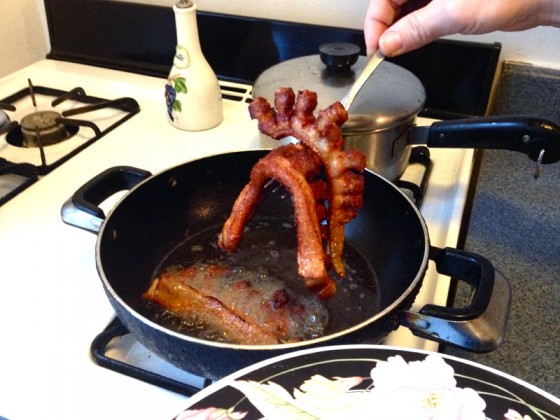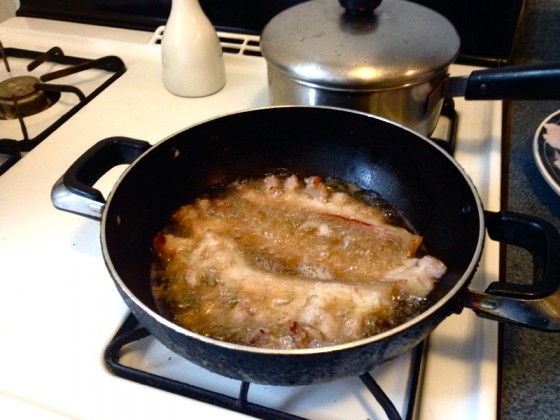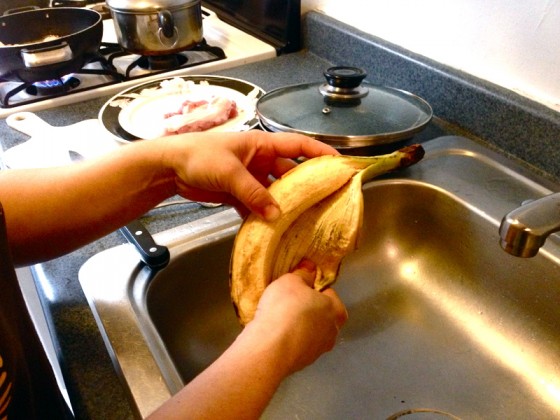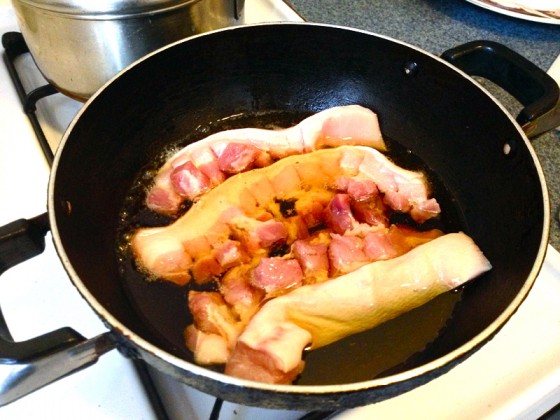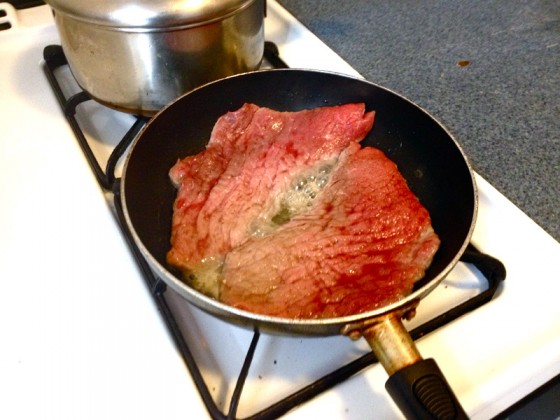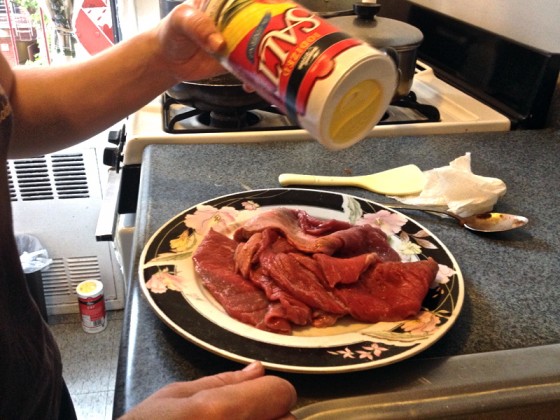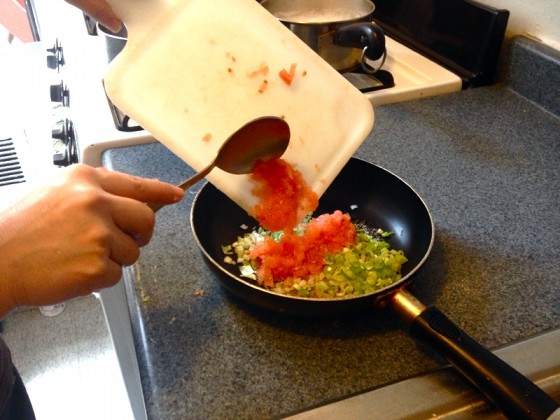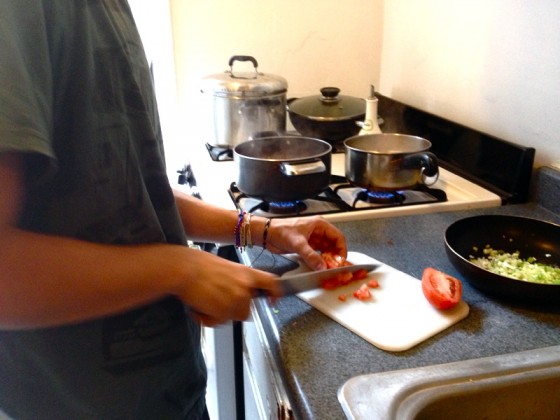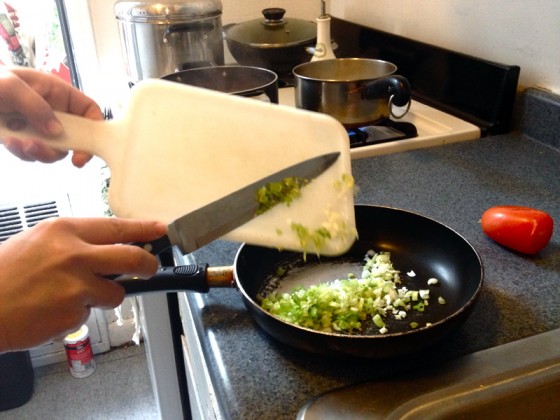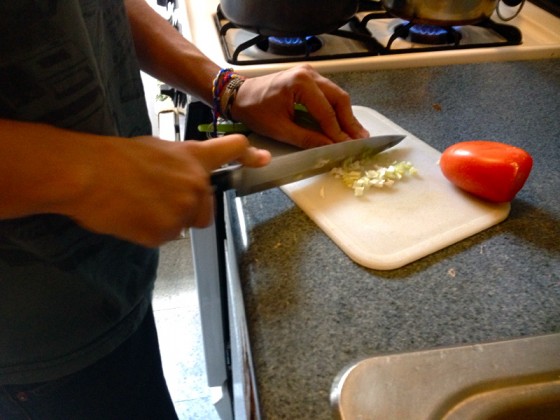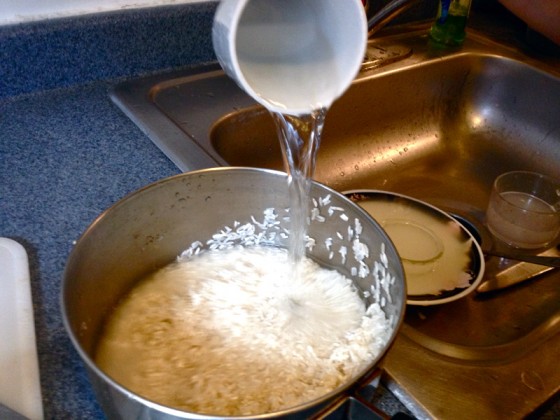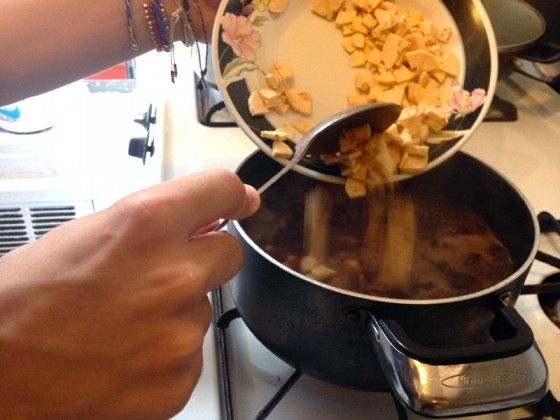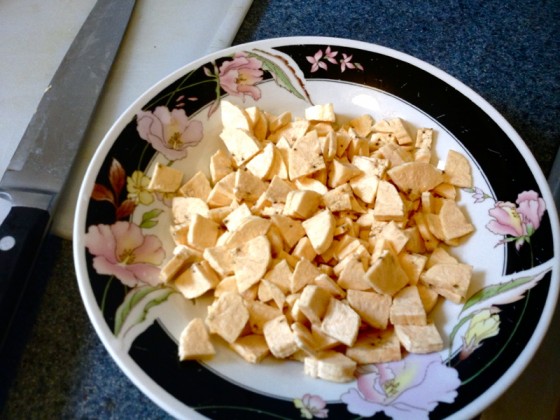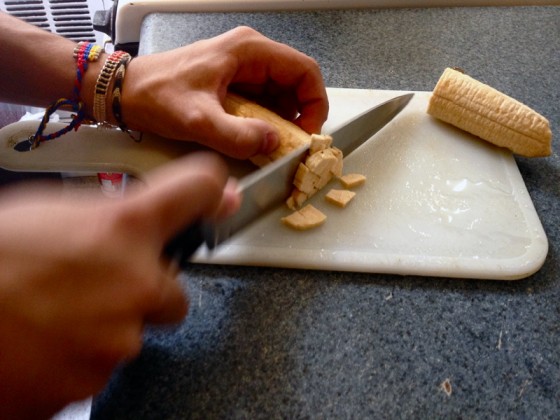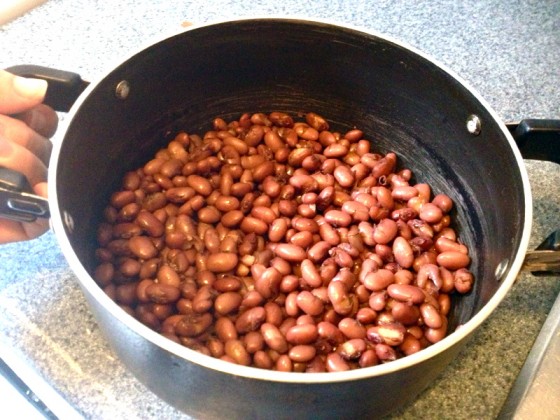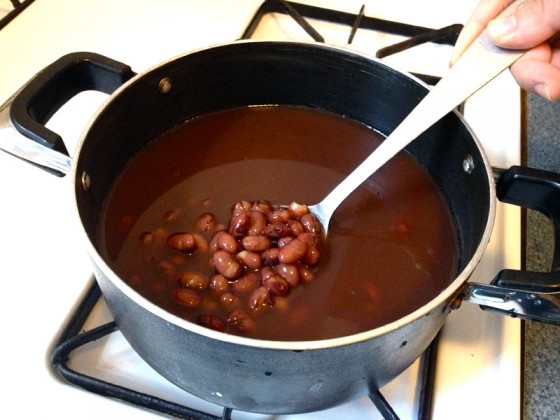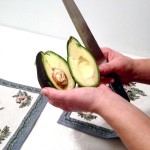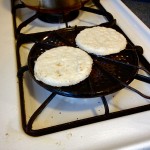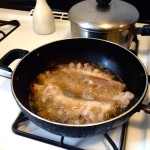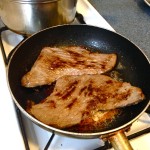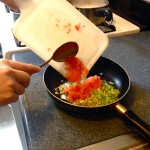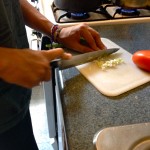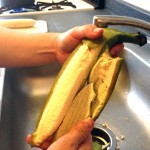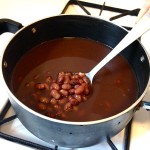Welcome back to “The Kid Stays in the Kitchen.” Each week a student is assigned to cook a traditional dish with a friend or family member and document the experience in photos and words. This week features Sofie, who has turned to her Belgian roots to cook up witloof, endives wrapped in ham and cooked in cheese sauce. A perfect winter dish! Enjoy!
As a little kid I was fairly open to the food that my parents fed me even if it were Brussels sprouts, broccoli, or endives. So whenever my dad made witloof, a Belgian dish of ham-covered endives cooked in cheese sauce, I always finished it and went back for seconds. It’s a simple dish that can be considered Belgian comfort food. In my family we don’t really have a traditional dish that we always make on holidays or birthdays but there are a few dishes, including this one, that I have enjoyed since I was a little kid. My father grew up eating it and he has made for us for many years. When my dad first came to the US 30 years ago, it was very difficult to find endives, but now they’re easy to find at most grocery stores.
Endives, unlike other leafy vegetables, have white leaves because they are grown underground. Taste-wise, they are unlike other vegetables; they are both bitter and sweet. This particular dish is very different from the usual ways that Americans eat endives, raw and on top of salad. But in Belgium they are almost always cooked.
This dish is quite meaningful to my parents. It is one of my mom’s favorite Belgian dishes and it was the last dish that my dad had with his grandmother. And since my dad has made it for me since I was a little girl, I will continue to eat it throughout my life. — Sofie
Belgian Endive with Ham and Cheese (Witloof)
Recipe by Sofie’s dad, Stefan
Serves 6-8
Endives
- 12 endives
In a pot, boil the endives for 20 minutes. Drain the water. Let them cool and then squeeze any extra water out of each endive.
Cheese Sauce
Ingredients
- 5 tablespoons butter
- 4 tablespoons all-purpose flour
- 4 cups milk
- 1 teaspoon salt
- 1 pound of grated Gruyere
In a medium saucepan, melt the butter over medium-low heat, making sure not to burn it. When melted add the flour and stir till it is a thick golden paste. Slowly add all of the milk while continuously whisking. Bring the sauce to a low boil. Continue stirring till the sauce thickens. Once it thickens stir in the salt and remove from heat. Immediately add the grated cheese and stir until it is a smooth sauce. To achieve this silky cheese sauce make sure it is no longer on the heat otherwise it will be lumpy.
- Cheese sauce
- Cooked endives
- 12 slices of cooked ham
Preheat oven to 350. Wrap each endive in a slice of ham and place them next to each other in an ovenproof pan. Pour the cheese sauce over the endives and place them in the oven for 20 minutes. Once 20 minutes has passed you can turn on the broiler to brown the top, be careful not to burn it though.
Serve with mashed potatoes.


